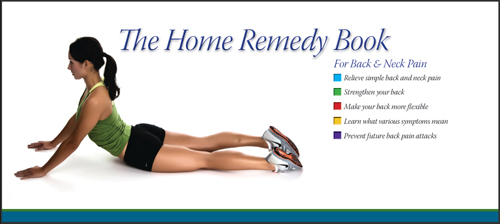- Locations
- Find a Physician
- By Physician
- By Department
- The Center for Spine Health
- Hand & Wrist Center
- Shoulder & Elbow Center
- Foot & Ankle Center
- Joint Replacement Center
- The Sports Medicine Center
- Pediatric Orthopedic Center
- Trauma & Fracture Center
- Osteoporosis and Bone Health
- Oncology Center
- Cartilage Repair Center
- Concussion Rehab Center
- OrthoDirect
- Careers
- Patient Portal
- Intranet
Back & Neck Pain Relief | Knee Pain Relief
Back & Neck Pain Relief
 Doctors who focus exclusively on pain symptoms often recommend
treatment that is the exact opposite of what is actually needed. Historically,
doctors have treated back pain with bed rest and heavy drugs to mask
the patient’s discomfort. However, this type of treatment is actually
more damaging to the back. It causes back muscles to weaken, which leads
to more strain and pain. Patients became dependent on drugs and grew
inactive and disabled.
Doctors who focus exclusively on pain symptoms often recommend
treatment that is the exact opposite of what is actually needed. Historically,
doctors have treated back pain with bed rest and heavy drugs to mask
the patient’s discomfort. However, this type of treatment is actually
more damaging to the back. It causes back muscles to weaken, which leads
to more strain and pain. Patients became dependent on drugs and grew
inactive and disabled.
Pain relief can actually be achieved through movement. Low-impact sports such as walking and swimming are ideal in making the back feel better and stronger.
Working with a therapist may be necessary for optimal recovery from back or neck pain. Therapists are able to relieve pain using specialized techniques, tissue and joint mobilization, and personalized exercises. A therapist is also trained to recognize the boundaries of back and neck pain patients, in order to maximize therapy without causing further injury.
 Preventing Low Back Pain & Neck Pain
Preventing Low Back Pain & Neck Pain
Proper multi-disciplinary rehabilitation programs are structured around returning patients to the tasks of everyday life. Once the collaborative effort has paid off, and this has been achieved, it is important to prevent future back attacks. In just about any job situation, there are going to be hazards that need to be avoided, whether it’s sitting at a desk or working in a warehouse.
Sitting at a Desk
You may have encountered the term "ergonomics," which is surfacing more and more in the workplace. Ergonomics is a science concerned with designing and arranging things people use in the safest and most efficient manner possible.
Ergonomics is often applied to people who sit at a desk all day. While it seems harmless, sitting for long periods of time can actually cause back pain. It unloads weight on the back, especially if the chair is poorly designed.
 The basic rules of desk related ergonomics:
The basic rules of desk related ergonomics:
- Make sure your chair molds properly to your back. Many employers concerned with the safety of their workers purchase chairs that support the low back. If you are too short or too tall for your back to rest properly in these chairs, or if your company does not offer ergonomically designed chairs, consider bringing in a rolled-up towel. Place it behind your low back to reduce the amount of stress on the back and help prevent low back pain.
- Make sure your feet rest flat on the floor. If this is a problem, use a footstool. Proper foot and leg alignment will ease back stress.
- While typing on a computer, your forearms and thighs
should be parallel to ensure proper shoulder alignment. If necessary,
use a pad to support your wrists while typing.
- When you type, your neck should not have to crane constantly, as your eyes dart from keyboard to monitor. The monitor should be at eye-level or slightly below eye-level.
- Get up and move around every half hour, even if its just a quick stretch by the side of your desk. Your back enjoys movement, so reward it occasionally.
Standing for Long Periods

Many jobs involve standing for long periods of time, such as teachers and cashiers. People rarely equally distribute their weight onto both legs while standing. Instead, they tend to shift their weight from one side to another, throwing the spine out of alignment, which can lead to back strain.
If you have difficulty standing without shifting weight, try standing with one leg on a footrest, periodically switching feet. Take a minute every now and then to do back exercises; that will help loosen up stiffness.
Knee Pain Relief
There are several things you can do for relief of simple knee pain that doesn’t relate to trauma, fracture or a chronic arthritis syndrome.
Anti-Inflammatories
Non-Steroidal Anti-Inflammatory medication, or NSAID’s, such as ibuprofen can help reduce swelling and inflammation. The problem with using any drug, including ibuprofen, is that it also masks the pain of a knee injury and can damage internal organs (e.g. liver, ulcers) over extended use.
Drugs can also encourage the person to continue to abuse the knee and worsen the injury to it. For knee pain that lasts longer than a few days, the person really needs to seek out an orthopedic surgeon so they can determine the cause of your knee pain symptoms. There are many new NON-surgical treatment options now that can relieve the pain symptoms without relying on drugs that mask the symptom and may have dangerous side effects on a liver or other internal organs.
If you are a weekend warrior and have caused some knee pain with too much activity, you can try the following as a home remedy for knee pain:
Rest, Ice, Compression, Elevation = RICE
This is an easy to remember four-step formula for treating a knee injury that is incurred from activity.
• Rest, means to keep the knee away from any stressful activity, preferably immobile initially.
• Ice means to apply ice to the knee to control swelling and inflammation. Wrap ice in a towel so that it does not agitate the skin.
• Compression will help prevent hemorrhaging or internal bleeding.
• Elevation. Elevate the leg above the heart to reduce internal bleeding.
Other home remedies for knee pain:
Other home remedies for knee pain to delay joint replacement surgery can include:
1. knee braces to restrict painful range of motion
2. exercise and stretching
3. weight loss to reduce pressure on the knee joint
4. over-the-counter anti-inflammatory medication
5. steroid injections into the joint
6. hot packs and cold packs
7. regenerative medicine procedures such as stem cell replacement
8. alternative therapies, such as acupuncture and yoga
Weight loss to reduce knee pain symptoms
According to the US Government, 56% of Americans are overweight. This is bad news for our knees. Scientifically speaking, our knees form and develop in mass and strength in proportion to the amount of weight our body was designed to hold. So, if you are a small woman, your knees are meant to hold a smaller amount of weight than if you are a six-foot tall man. Although the body is very adaptable and can learn to hold different weights, a point can be reached where the body is simply not comfortable supporting the excess weight.
Body Mass Index is the number you come up with when you divide how much you weigh in kilograms by how tall you are in centimeters squared. The number you come up with is your BMI. A BMI between 18.5 and 25 is considered in the normal range. A BMI above 25 is considered overweight and a BMI of 30 or more is classified as obese. To find your BMI, there are several calculators on the Internet including the BMI recommendations from the Surgeon General.
Diet
Losing weight can provide instant relief for the knees. Although we are constantly inundated with new diet fads, remember that logically, the way to lose weight is to consume fewer calories than we burn and the way to maintain weight is to burn approximately the same number of calories that we burn.
Although in reality, this method can be harder to follow than it is to understand, once we build healthy habits, this lifestyle will become easier and easier to maintain. Some diets help you to do this. Others are shams. Be cautious. Anything that seems to good to be true, probably is.
If you have arthritis, there are pain aggravators that should be avoided. For instance, paprika, pepper, tobacco, cayenne, eggplant, large amounts of potatoes and tomatoes can irritate your arthritis because these foods have alkaloids that prevent the repair of collagen and cartilage. Aspartame (found in diet sodas and artificial sweeteners) can also worsen arthritis since in causes inflammation in the joints when regularly consumed.
In study after study, it seems almost innumerable health benefits can be accumulated from eating a diet rich in fiber and complex carbohydrates found in vegetables, whole wheat and fruits. Once again, knees also benefit from this diet.
Exercise
It is also important to incorporate exercise into your routine if you have knee pain. Although it may seem like a Catch-22 (you cannot exercise because your knee hurts, and your knee hurts more because you cannot exercise) strengthening the leg muscles can be crucial in alleviating knee pain.
The more support the muscles can offer, the less stress and therefore less pain. Please refer to our online exercise library, which will show you several knee strengthening exercises. Also, if your knee hurts and you want to start up an exercise routine, why not try a stationary bike or swimming? While running or stair climbing can be taxing to the knees, the stationary bike and swimming are both excellent cardiovascular activities that only minimally put pressure on the knees.
Glucosamine and Chondroitin Sulfate
Nearly 40 million Americans, or one in seven people, have arthritis. For many, the arthritis causes pain in the knees and joints. Early on, glucosamine and chondroitin sulfate were recommended as a non-surgical treatment option for knee pain.
But today, the American Association or Orthopedic Surgeons (AAOS) strongly advises against taking them in the form of dietary supplements for treating osteoarthritis of the knee
According to the AAOS, people who use these supplements hope they are going to get pain relief from osteoarthritis, and perhaps even some repair of the cartilage. Both glucosamine and chondroitin sulfate have been used in Europe for several years, with few reported side effects. Both supplements also have some anti-inflammatory effect.
But there is no study proving that either glucosamine and chondroitin, taken singly or in combination, will slow the degenerative process or improve the cartilage in arthritic joints. All studies done to date have been short and focused on pain relief. A long-term study is just beginning, sponsored by the National Institute of Arthritis and Musculoskeletal and Skin Diseases and the National Center for Complementary and Alternative Medicine.
Lastly, according to the AAOS, glucosamine and chondroitin sulfate are not tested or analyzed by the Food and Drug Administration before they are sold to consumers, which means there is little regulation that the consumer is even getting what they pay for. A recent study by ConsumerLab.com revealed that about half of the glucosamine and chondroitin supplements tested did not contain the amount advertised.
Similarly, according to Cochrane Report, a respected medical research journal, a Cochrane meta-analysis in 2007 found that the “symptomatic benefit of chondroitin was minimal or nonexistent. Use of chondroitin in routine clinical practice should therefore be discouraged.” A second Cochrane review in 2016 again found that many of the studies that touted the benefits of the chondroitin were low quality or flawed.








